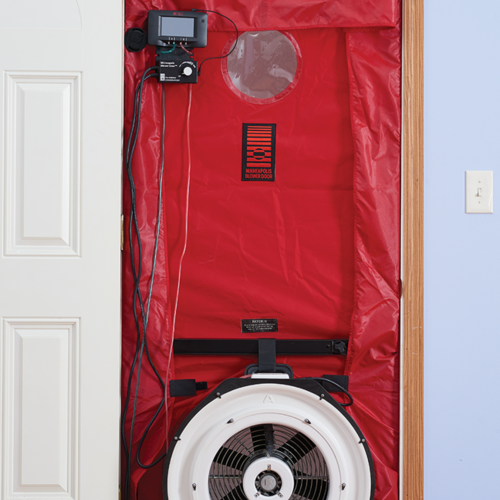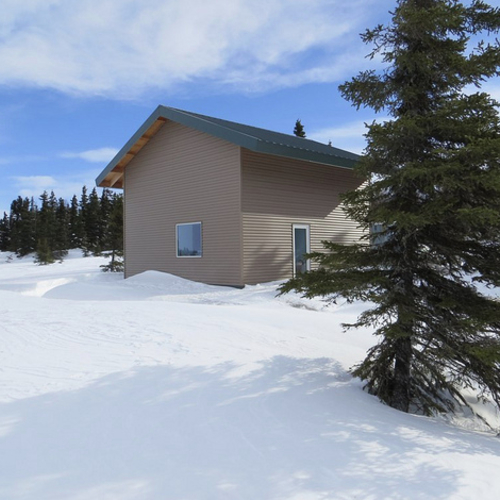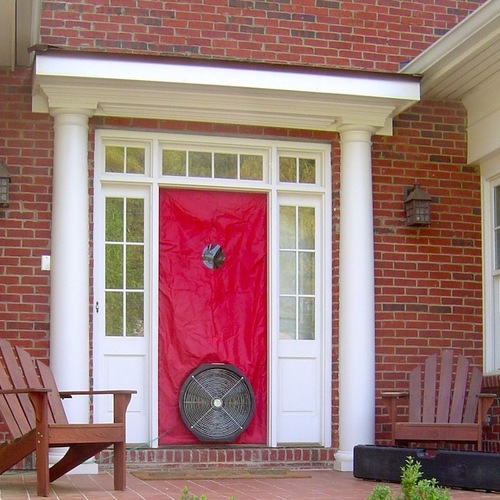
Image Credit: Buildingscience.com
In commentary recently posted to the Building Science Corporation website, building scientist Joe Lstiburek takes a stroll down memory lane and reflects on his attempts in the early 1980s to help develop an airtightness standard for residential construction in Canada. Later, after signing on with production builders in the U.S., he launched a successful campaign to plug “big holes” in the envelopes of the homes these builders were constructing so that the finished products would be more comfortable to live in.
“I picked one of the big builders’ worst divisions in terms of comfort complaints — it turned out to be Chicago — and focused on making the comfort complaints go away. Notice, energy had nothing to do with any of this,” Lstiburek writes. “I figured that if they got rid of the big holes, the comfort problems would go away. The list of big holes was pretty easy to compile. Bathtubs on exterior walls, fireplaces and chimneys on exterior walls, garages attached to houses with bedrooms over them, cantilevered second floors, interior soffits dead-ending into exterior walls, and dropped ceilings under attic insulation. Done. Make these go away with draft-stopping and, presto, the comfort problems would go away.”
Blower-door tests in the Chicago-area houses consistently came in at 3 air changes per hour at 50 Pascal pressure difference – an ACH value that, coincidentally, had already been written into building code in Sweden and had originally inspired the Canadians to come up with their own airtightness standard.
However, the 3 ach50 goal was rejected as too leaky when Lstiburek was working with the National Research Council of Canada, whose contingent in Saskatoon, he says, favored 1 ach50 as the standard. Eventually, the NRC folks compromised on 1.5 ach50 as the standard for a new residential program dubbed R-2000. As Lstiburek expected, however, the standard was not widely adopted.
As airtight as you like
Lstilburek salts his discourse on building-envelope airtightness with a few key points:
(1) Blower-door tests are terrific for measuring equivalent air-leakage area, but they do not precisely measure the leakage rate of a building in service or the locations and severity of leakage paths in the envelope;
(2) Blower-door test results alone shouldn’t be used to declare that the tested building doesn’t need mechanical ventilation;
(3) Draft-stop the air leaks;
(4) Install a controlled ventilation system and sealed-combustion or power-vented appliances;
(5) Airtightness below 3 ach50 is terrific, 1.5 ach50 is difficult to achieve, and the Passivhaus requirement of 0.6 ach50 is really difficult to achieve – but if that’s your thing, fine. Just don’t try to impose 0.6 ach50 – a “number doesn’t seem to be based on anything that makes any sense” – on everyone else, including and most especially Joe Lstiburek.
He elaborates on this point somewhat more crisply near the end of his essay: “From my own personal perspective, you should be able to pick any number you want. And hats off to the Passivhaus folks for their own personal program number. It is their program, and they get to do what they want as far as I am concerned. I only get irritated when they criticize everyone else … arbitrary and capricious is OK too — in your own personal program and your own personal life — but not in mine. Public policy and national standards should not be arbitrary and capricious.”
Weekly Newsletter
Get building science and energy efficiency advice, plus special offers, in your inbox.















6 Comments
Excellent
Thanks for the continued useful information.
I don't get the haranguing of
I don't get the haranguing of Passivhaus-levels of airtightness (0.6ACH50) as 'arbitrary and capricious' - isn't 1.0 or 1.5ACH50 for the R-2000 just as 'arbitrary and capricious'?
Additionally, 0.6ACH50 is difficult - but far from impossible. Otherwise production builders in the EU wouldn't be building to PH now. As it is, PH builders in the EU, routinely achieve below 0.3ACH50. and several countries in the EU are now mandating airtightness levels of <1.0ACH50 when using MHRV.
Also - I would argue that being able to pick whatever 'number you want' is far more 'arbitrary and capricious' (and damaging) than strict mandates. In fact, I believe the larger problem is those mandates aren't strict enough - I'm not talking Passivhaus (yet) but where things presently are is fairly horrendous.
Just to throw out a few more
Just to throw out a few more benefits of PH airtightness... PHPP has a toggle that allows you to see corresponding space heating demand for different ACH50 scores. On a project we're working on, we're trying to keep the space heating demand fairly low while ensuring the envelope is fairly optimized. Here are results:
1.5ACH50 - 4.72 kBTU/ft2a (R-2000)
0.6ACH50 - 3.82 kBTU/ft2a (PH, ~20% drop in space heating demand)
0.2ACH50 - 3.42 kBTU/ft2a (what we'll be shooting for, ~19% drop from PH min. and 27.5% drop from R-2000 min.)
Response to Mike E. -- Benefit of increased air tightness??
Mike, it sure seems to me that the diference you quote between the R-2000 and PH air tightness limits are not a big number. Of course reducing the infiltration will lower the energy requirement, but by how much. For a 1000 square foot home, this is an annual difference of 900 kBtu, which is ~264 kWh. This equals the output from a small PV system over the course of one month....then multiply that by 12. The real question is how much more difficult and more expensive is getting to 0.6 from 1.5 ACH50 or some other higher value? If it's really easy and cheap, then saving 264 kWh by that method makes lots of sense, but if it adds a lot of construction and design cost, then renewable energy (or other methods) is probably a better bet.
I think this gets to Dr. Joe's point. People can save energy in any way they want to, but they shouldn't require that others take an approach that is more costly or difficult than something they can come up with. As you say, there are other reasons to lower the heating demand--alternative heating systems, point-source heating, etc. All of these requirements are arbitrary in some respect, but not all of them require lots and lots of effort, planning and careful supervision.
Response to Mike E.
See above: " Blower-door tests are terrific for measuring equivalent air-leakage area, but they do not precisely measure the leakage rate of a building in service"
In fact, a blower door test would correspond well to your house's real air leakage only if you had a blower door on your house all the time.
For example, a house in a windy climate will leak a lot more air than the identical house in a less windy climate. But we don't know how much more because we don't have the data. A tall, skinny house will leak a lot more air than a ranch with the same ACH50 test result because of the stack effect.
A house with thousands of tiny holes will have a different real world air leakage than a house with only one big hole and the same ACH50 test result.
Reading between the lines, it appears that Dr. Joe thinks the data (if we ever get it) will show that airtightness better than around 1.5ACH50 is overkill.
The PHPP algorithm you are citing is just a SWAG until verified by field data.
I was just showing that there
I was just showing that there are some add'l benefits to the airtightness (or, at least modeled, as Kevin pointed out). Furthermore, the notion that anything below 1,5ACH50 is 'arbitrary' or overly difficult, or overkill flies in the face of pretty much all requirements or recommendations for European 'low-energy' standards utilizing balanced MHRV:
Austria: 1,5 ACH50 (MHRV) / 1,0ACH50 (dreiliterhaus) / 0,6 ACH50 (passivhaus, klima:aktiv)
Czech Republic: 1,0ACH50
Denmark: 1,5 ACH50
Finland: 0,8ACH50
France: 0,6ACH50 (BBC-Effinergie)
Germany: 1,5 ACH50 (EnEV) / 1,0ACH50 (niedrigenergie) / 0,6 ACH50 (passivhaus)
Norway: 1,0ACH50
Switzerland: 1,0ACH50 / 0,6 ACH50 (Minergie-P)
i just don't get the position that tighter isn't better - especially when it comes to maximizing the efficiency of MHRV. almost all of the EU is at or heading towards tighter recs - and they tend to have better performing MHRV products...
Log in or create an account to post a comment.
Sign up Log in